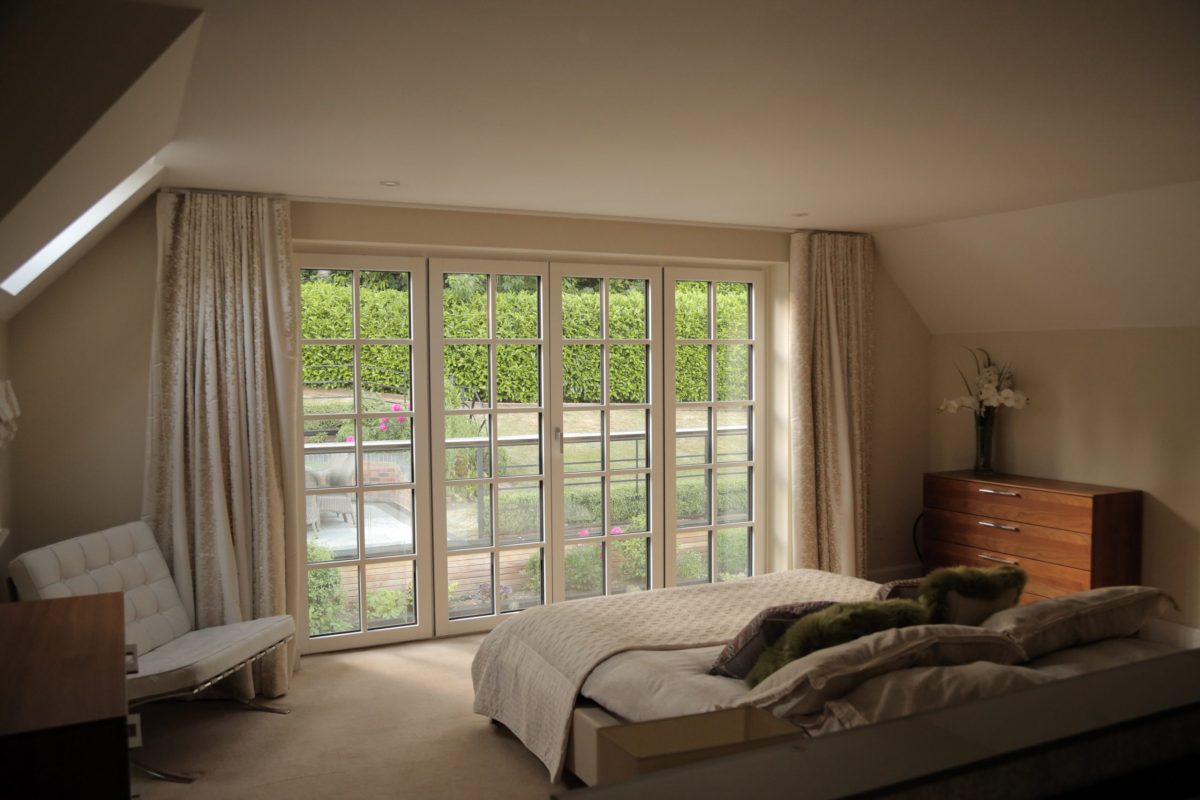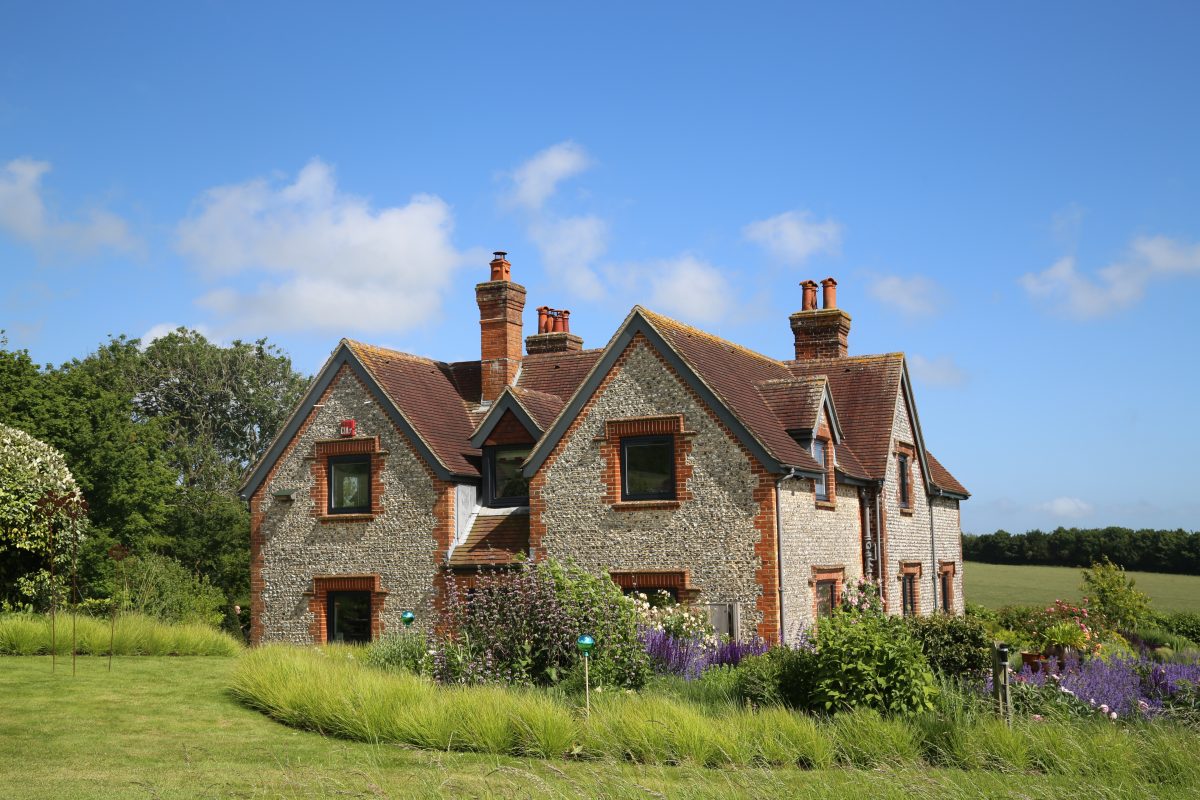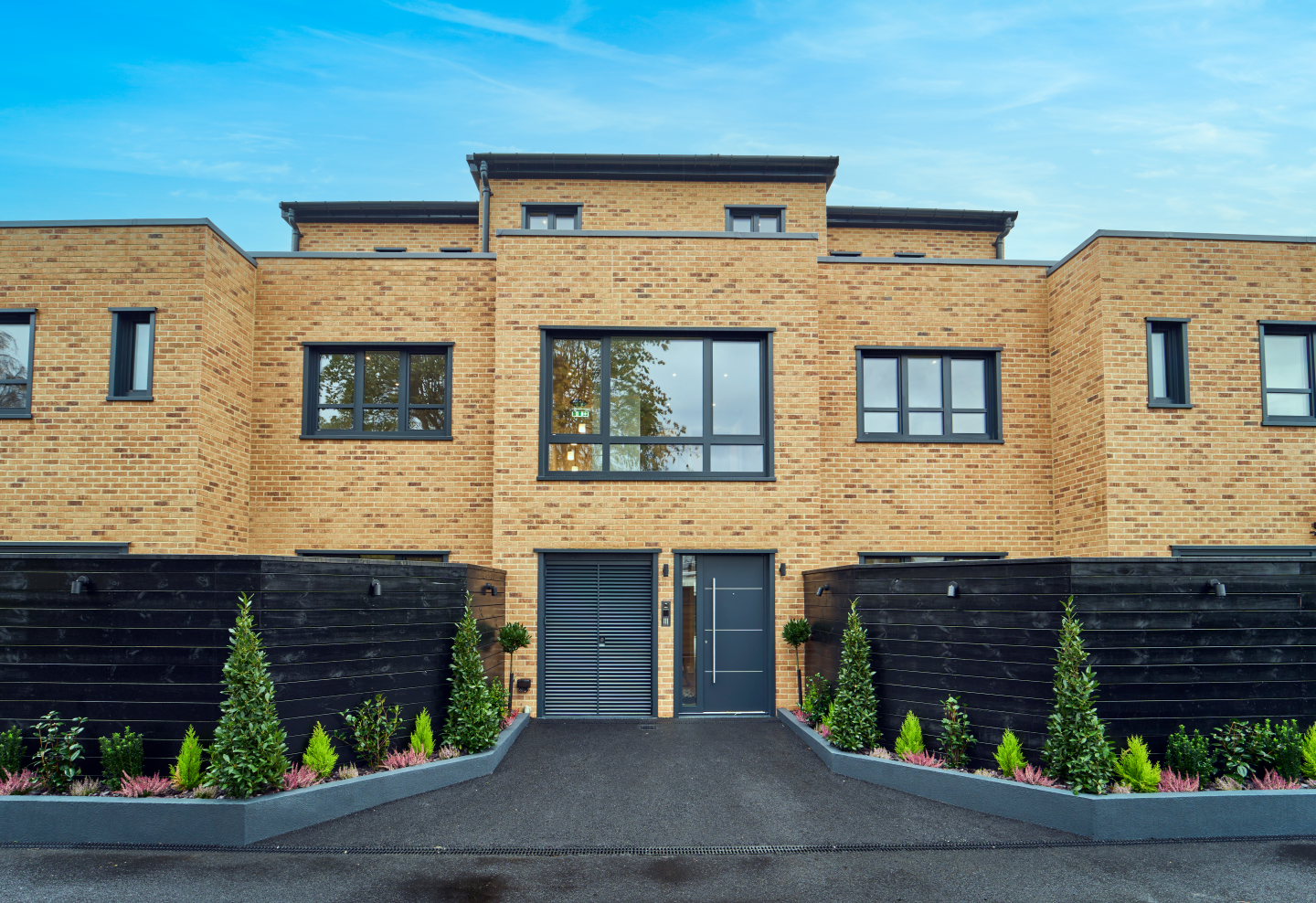Do you get woken by traffic noise during the night or have to listen to noise pollution from planes, trains and noisy neighbours? You are not alone. With more and more people packed into busy urban areas, creating a quiet, relaxed living space has become more and more important.
Surprisingly, it is not just people living in cities but also quiet, rural areas who benefit from reduced noise pollution. Watch this case study video from Bath.
So, what does it all mean and what can you do to reduce outside noise and sound-proof your home? How important are high performance windows for acoustic performance?
What is a Sound Climate?
The ambient sound climate of a site can range from birdsongs and distant mooing of cows to the perpetual roar of a motorway. Our response, living there, can be equally diverse, from delight to severe stress and sleep disturbance. It is essential to assess the sound climate of a site properly and design the building facade accordingly.
Cut the Noise
Noise is defined as unwanted sound. This implies a personal value judgement. We would expect that natural sounds, as mentioned in the paragraph above, to be received positively by most people, whilst most would regard traffic noise negatively.
Noise is perceived very differently by people. Some are more sensitive to noise; others can ignore even higher levels. As the noise perception is quite subjective and individual, it may be quite difficult sometimes to determine the actual noise level. The following sound levels and sources can provide a more objective idea of the approximate relevant values in decibel (dB):
- Silence 0dB No sound
- Swish sound made when handling paper 10dB An almost inaudible sound
- Rustle of leaves 20dB A barely audible sound
- Ticking of a clock 30dB A very silent sound
- Quietly playing radio 40dB A silent sound
- Normal conversation 50dB A rather quiet sound
- Buzz of an office 60dB A moderate sound
- Streat traffic 70dB A loud sound
- Loud music playing on the radio 80dB A very loud sound
- A factory building – A very busy street 90dB A very loud sound
- A jack hammer working 100 dB An extremely loud sound
- A motorcycle without a damper 110dB An unbearable sound
- A jet plane flying at short distance 130dB A painful sound
What does dB mean?
The decibel (dB) is a unit of sound energy intensity, on a logarithmic scale, in order to cover a very large range of intensities.
When the dBA is used, the letter “A” denotes that the sound has been weighted over it’s frequency range, roughly according to the sensitivity of the human ear.
At the urban environment we focus on commonly regarded noise sources including traffic, trains, airplanes and industrial noise. (Noise from neighbouring occupants, such as speech, music, domestic activities can also cause irritation and stress, but it is out of the scope of this article).
Road traffic noise
Road traffic, as with most sounds that concern us, is not a one-off event. We need to use a method of measuring sound over a period. For this reason, we use the identities L10 and L90. L10 is the sound level exceeded for 10% of the time and L90 the one that exceeded for 90% of the time. These can be considered to represent the average peak intensity and average background noise level respectively.
An important rule is that for every doubling of distance, the noise from continuously flowing traffic is reduced at 3dBA. Thus, if the level at 10 meters from urban highway is L10 72dBA, in order to reduce it to L10 54dBA, as is recommended for residential development, the distance would have to be doubled six times – therefore we need a distance of 640 meters. This clearly rules out the distance as a strategy to mitigate effectively the traffic noise and accentuates the important role that the façade of the buildings have. (Acoustic barriers are also an effective solution, but out of the scope of this article too).
Railway traffic noise
There are similarities, but there are also a few differences between roads and railways as noise sources. One difference is that trains do not flow at the same density as road traffic. Their noise is perceived more as a series of discrete events, as individual trains pass. The maximum noise level occurs when the train is at its closest – on many occasions it can be really close to a building. When the distance is smaller to the train’s length, then for the time that the train is passing, it behaves as a linear source, like a motorway, featured in the section above. The 3dBA reduction, when doubling the distance rule applies. However, if the receiver is much further away than the train’s length, it behaves like a point source, so the sound is get reduced at 6dBA per doubling the distance.
Industrial noises such as a factory building or a building site, also act as a point source, unless these are very close, so the 6dBA reduction rule applies here as well. The important role of the building envelope in reducing the noise levels for the occupants is well justified in this case too.
Airplane noise
It is mostly associated with taking off and landing at an airport close to a large conurbation. For this reason, it normally affects a large population.
Airplane noise is also perceived as a discrete event. During the take-off and ascend, the sound source moves from the ground, affecting vertical facades, to being overhead, so that roofs become the main sound reduction elements.

The role of the windows in sound reduction
The windows, as part of the building envelope, have a crucial role to play to improve the sound reduction and provide noise comfort dwellings to the occupants.
Having already discussed the urban sources of noise and how distance can mitigate / reduce it, it is important to see in more detail how it is transmitted through a structure (building assembly / component), such as a window.
A sound wave is a series of high- and low-pressure zones that move through the air. When the wave meets a partition (window), the high-pressure zones push it and the low-pressure ones pull it back, causing vibration. The vibrating window then affects the air on the other side, compressing and de-compressing it, so it forms another sound wave. This implies that the more robust the window, (higher inertia due to its mass), the less it will vibrate in response to and the weaker the sound transmission will be. This is the reason that high reduction windows have glazing units with thick glass panes. It is also worth noting that due to the non-linear nature of our perception of sound, the performance of two independent partitions is better than the one of twice the mass, on the proviso that these are completely structurally independent.
A common cause of failure in noise control relates to the leaks, gaps, cracks. The sound, as a pressure wave, makes the air to move through the gap. In this way the air becomes a new sound source, as it emerges on the interior side of the window, without being influenced by the inertia and robustness of it. A small gap can cause a disproportionately large reduction in sound reduction performance.
What is Rw?
Acoustic insulation identifies the extent to which a window protects from the external sound. The acoustic insulation value of a window is indicated by using the Rw, which simply defines the properties of the window to dampen the nose.
Window manufacturers need to declare the sound insulation properties using the average weighted sound insulation index, Rw and the value of the spectrum adaptation terms C and Ctr, where the C is used for moderate and high frequency sounds, (playground, schools, motorway, highspeed railway noise) and the Ctr for moderate and low frequency ones, (traffic noise, low speed railway noise). The higher the value of the Rw, the better the insulation from the exterior noise the windows provide. We need to remember that if a window manufacturer declares that the Rw equals to 40 (-1, -5) dB, that it does not mean that the external noise will be reduced at 40dB. The value of the weighted average sound reduction coefficient must be corrected by the value of the spectrum adaptation terms. In the example above, the corrected sound insulation value will be:
Rw + C = 40 + (-1) = 39dB (moderate & high frequency sounds)
Rw + Ctr = 40 + (-5) = 35dB (moderate and low frequency sounds).
This introduces a new identity, the Sound Reduction Index (SRI) which is a much more accurate and reliable performance criterion, rather than the Rw.
Before we finalise our decision for the required sound performance of the windows, we need to remember that the rest of the building envelope has to perform to similarly high standards and that the windows must be installed as airtight as possible.

How Internorm windows and doors reduce noise
Internorm windows include three sealing gaskets as standard, which improves the provided airtightness and reduces the airborne sound. Equally important is that the glazing unit is bonded to the frame all the way around, such as I-tec Glazing, which also reducing the airborne sound and increasing the robustness and rigidity of the window.
With acoustic performance as high as 48dB, both Internorm Timber-Aluminium composite and uPVC-Aluminium triple glazed windows and doors are the ideal solution for noisy environments. However, even quieter residential areas or properties that are situated in exposed locations with strong wind, will notice the benefits of the outstanding noise reduction properties of Internorm windows. Homeowners of an 18th century home on an exposed hill in West Sussex enjoyed the improved thermal performance of their new Internorm windows but were also surprised by the sound reduction.
Quiet Mark is the independent global certification programme associated with the UK Noise Abatement Society charitable foundation and Internorm are proud to partner with Quiet Mark and to have its products independently certified. Quiet Mark only certify products that are manufactured to the highest standards. At Internorm, we are proud to support Quiet Mark on reducing noise pollution and creating a quieter, more comfortable living environment.
If you are designing, building, or renovating a home, where acoustic performance is important, please have a look on our website. You can speak to your local Internorm distribution partner, who will be able to offer advice on the most suitable products for your project.
Contributor: Vasilis Giannopoulos
